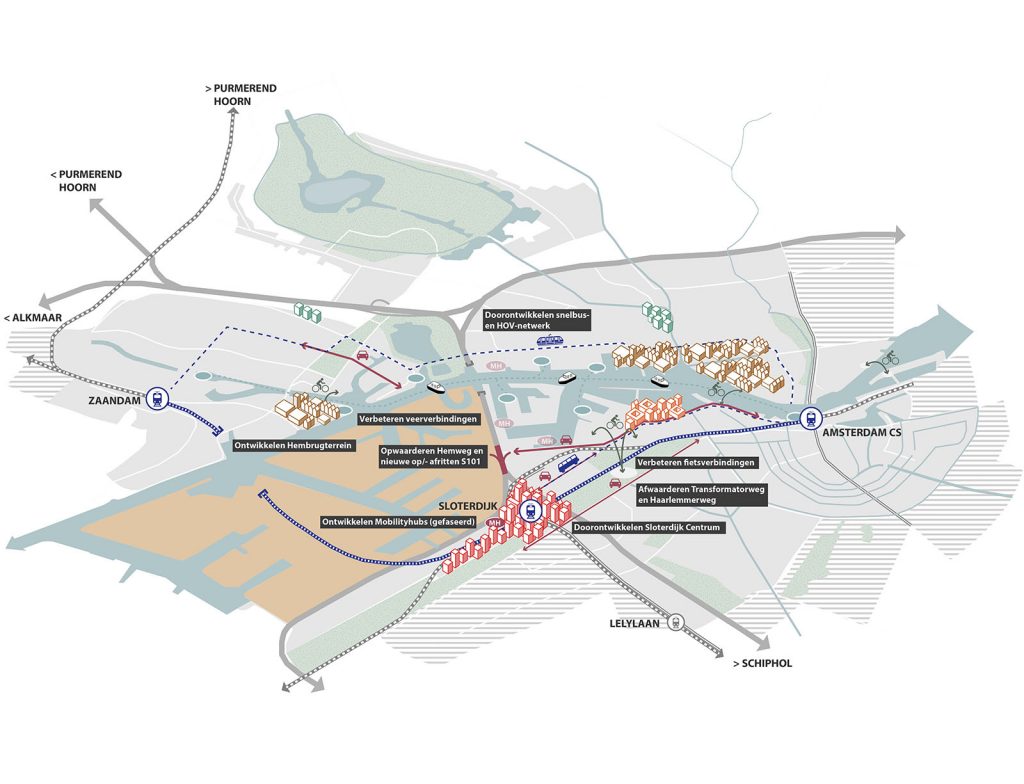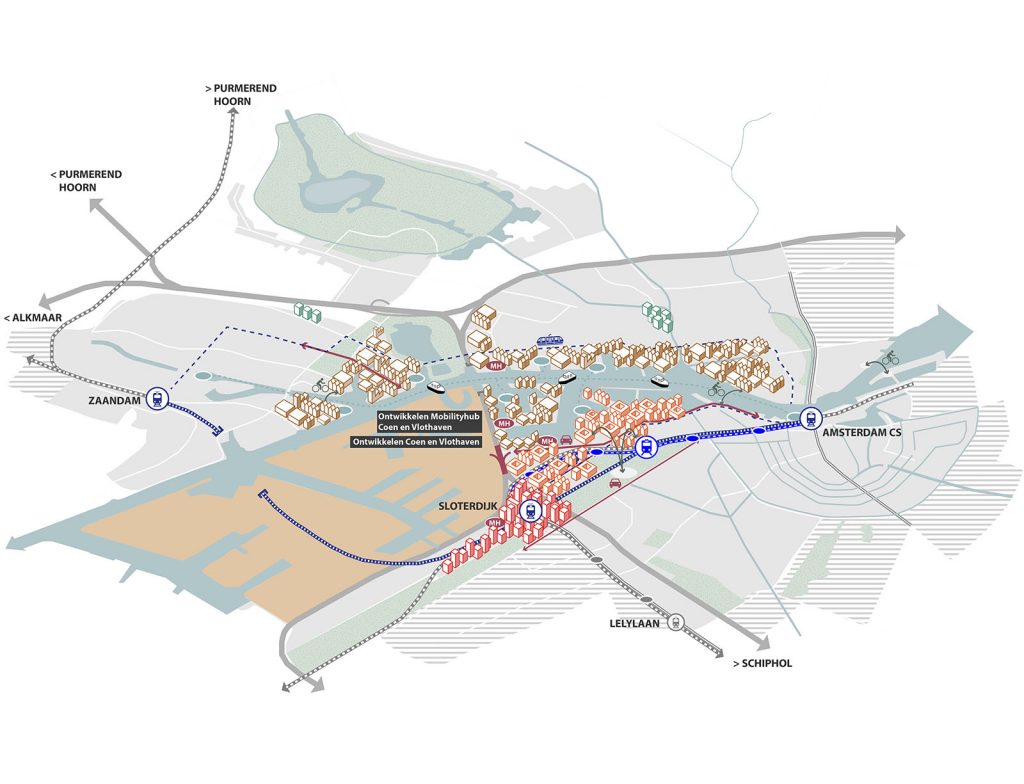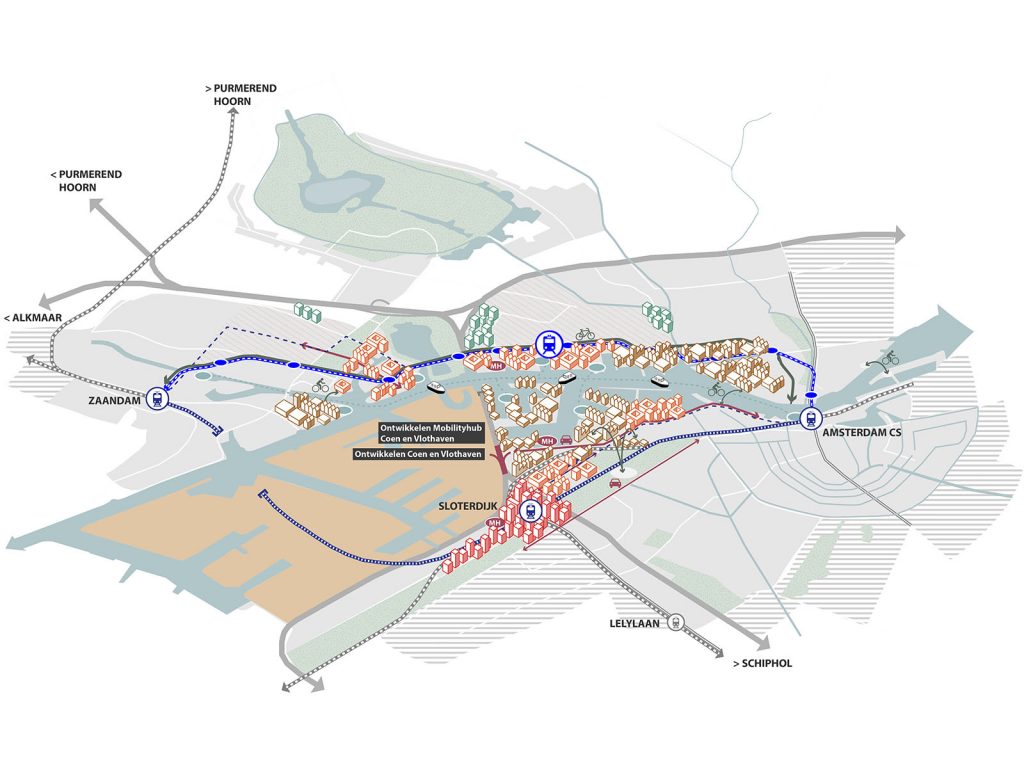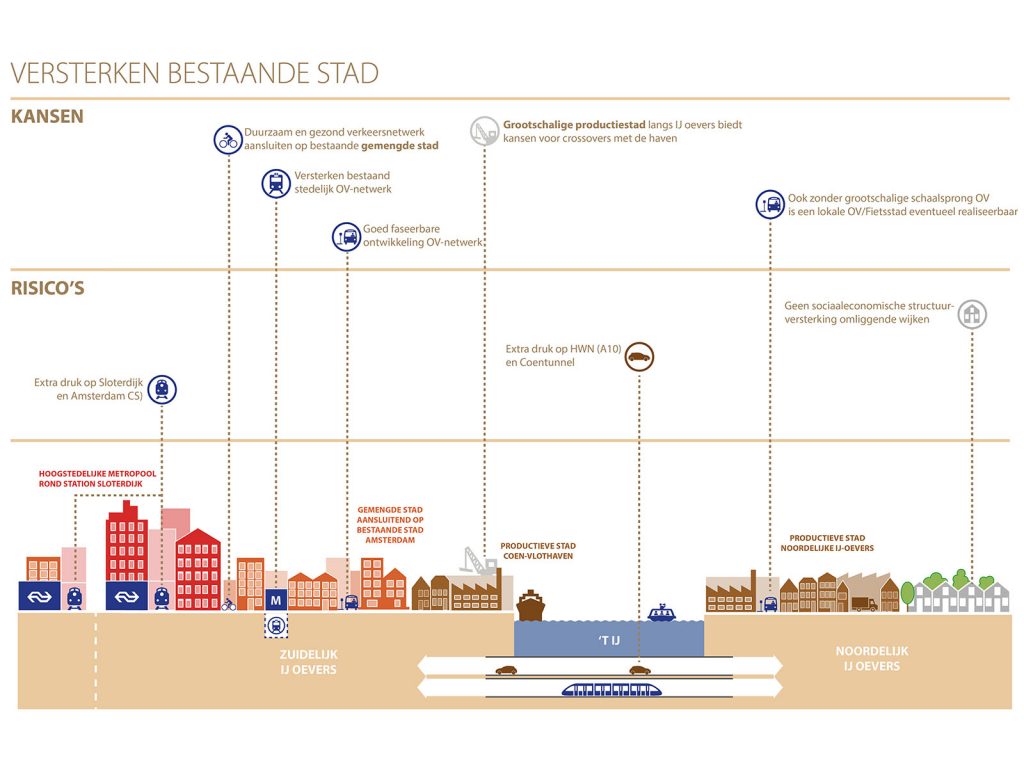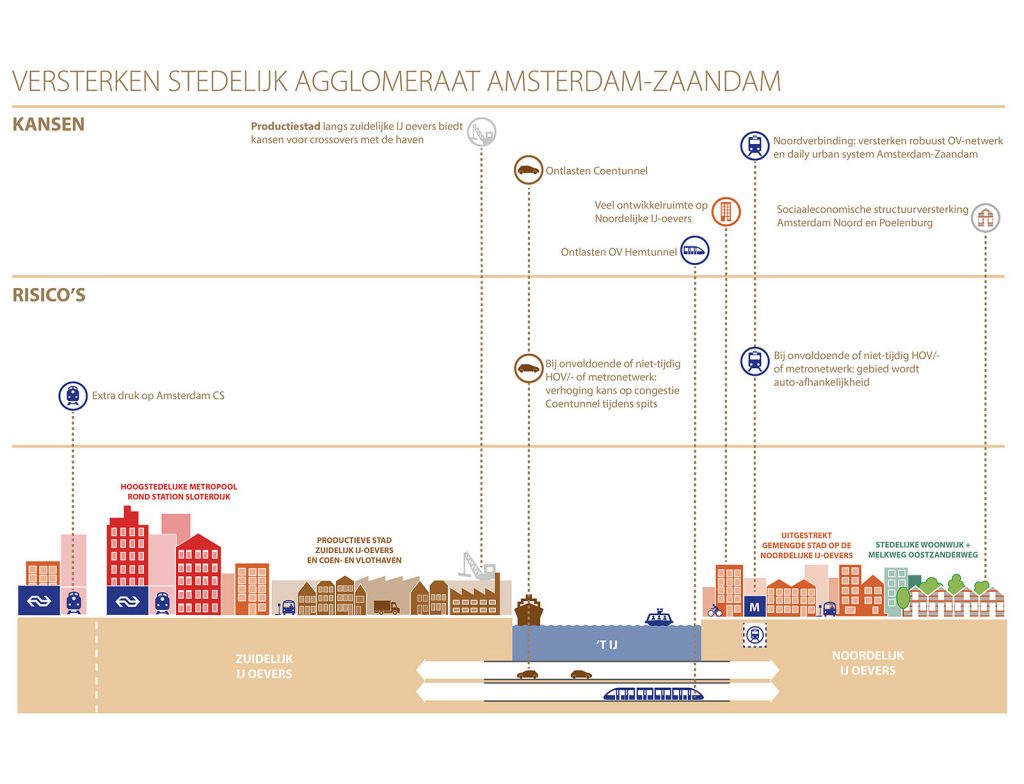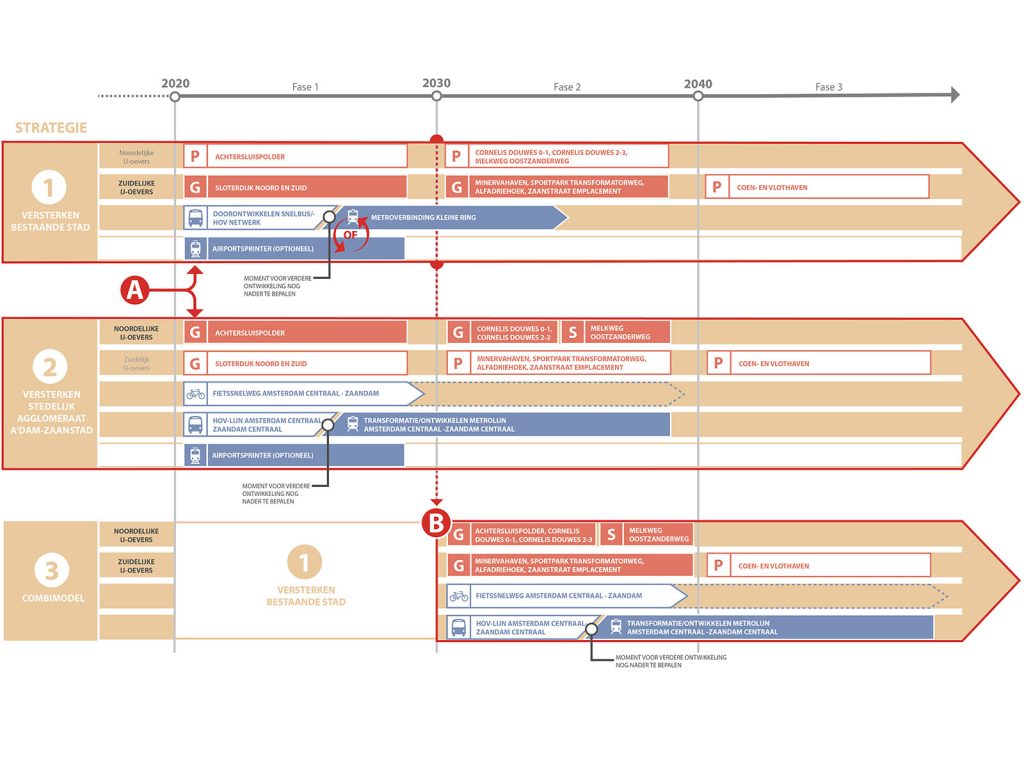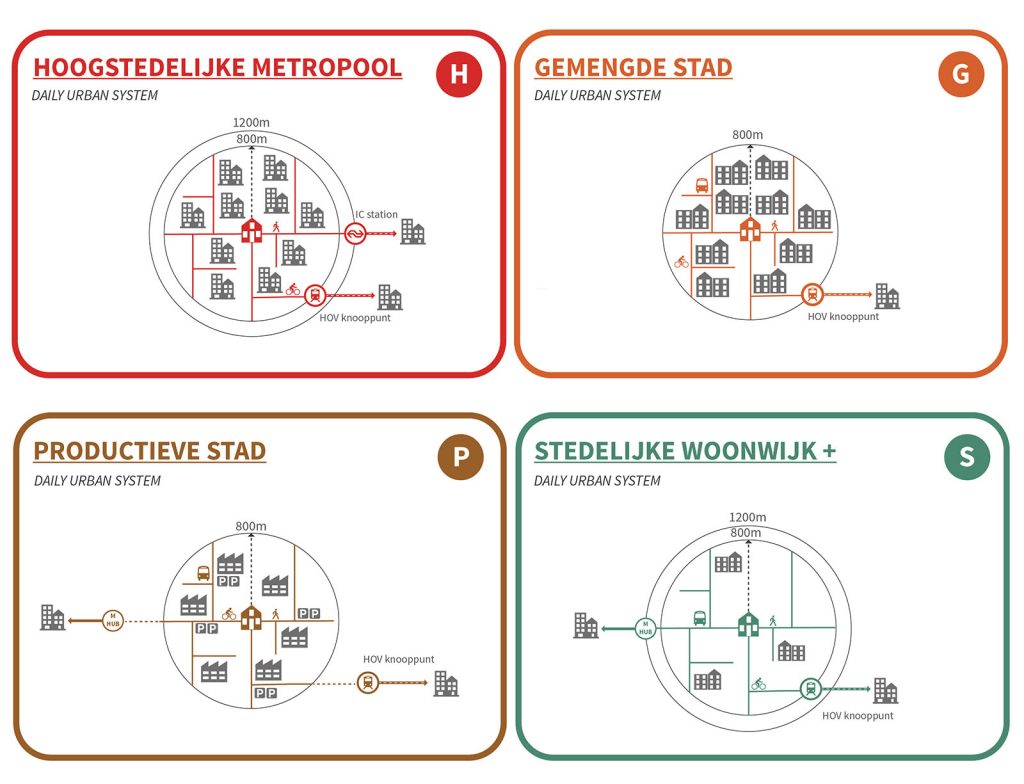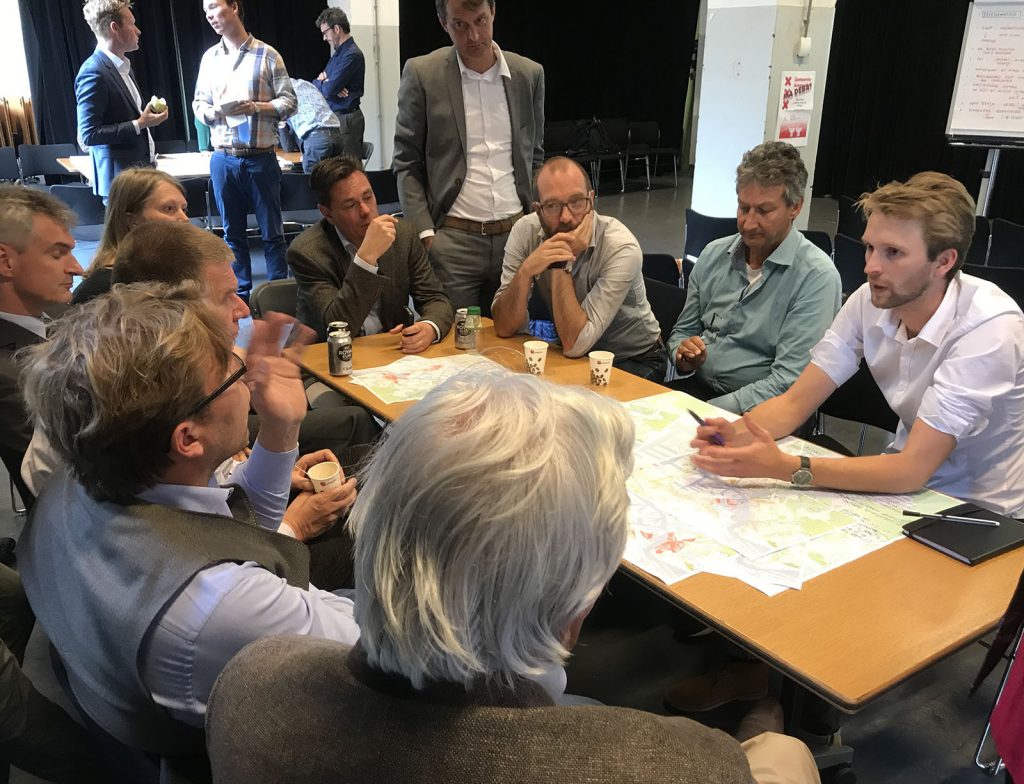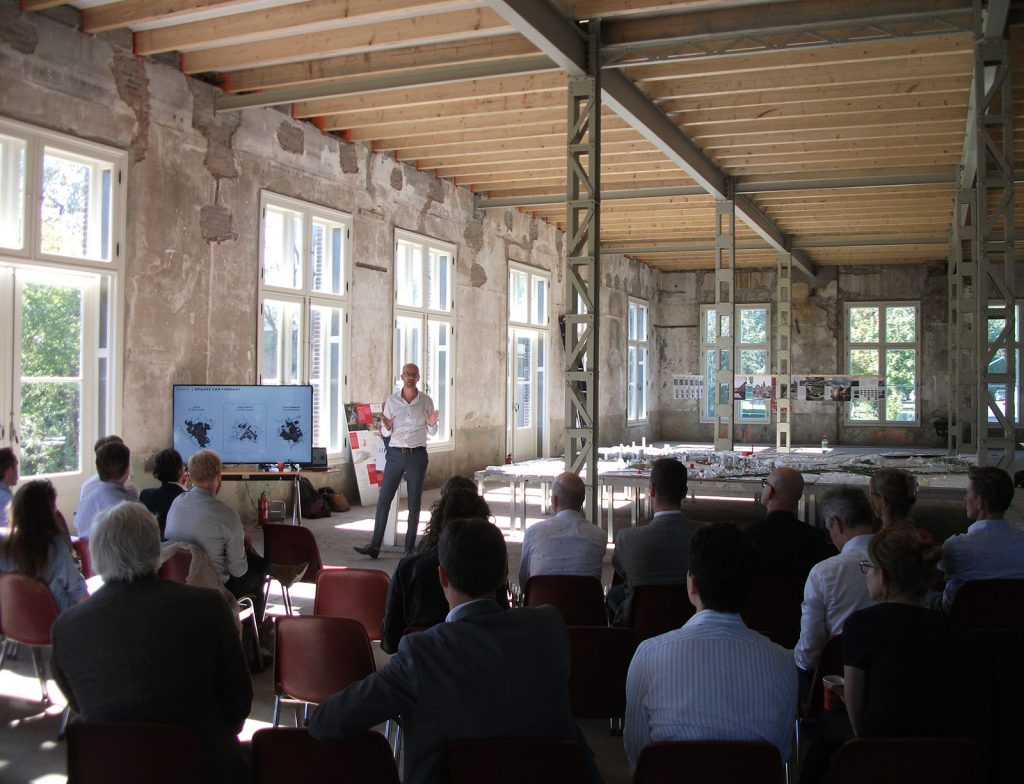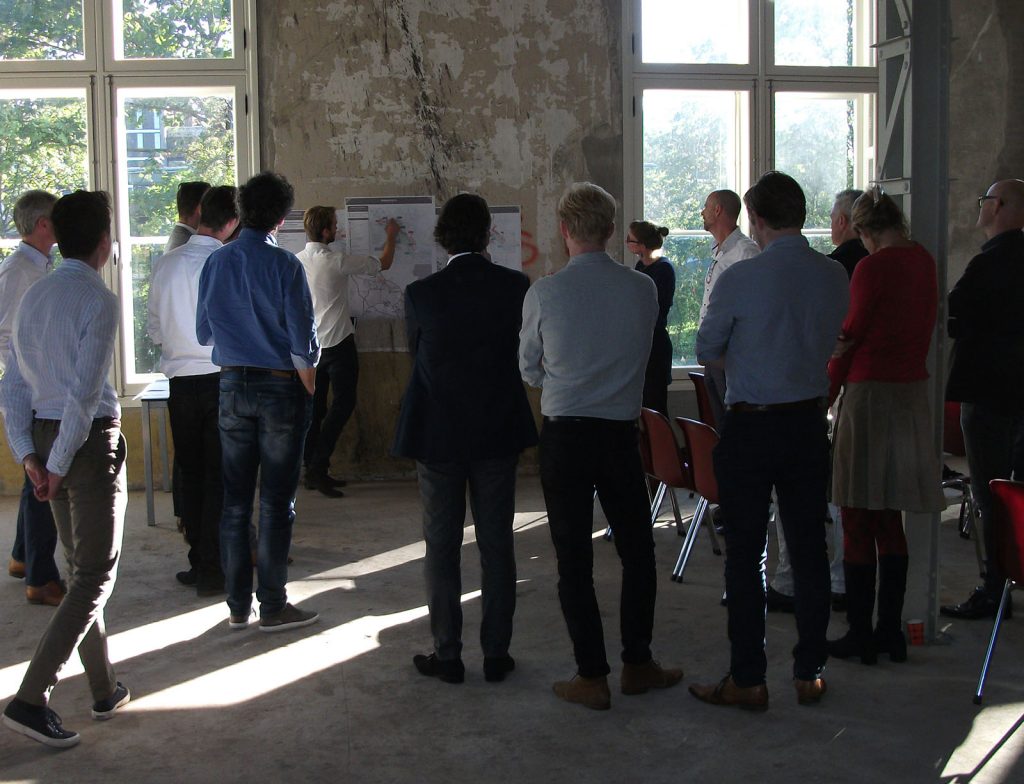On behalf of the Ministry of Infrastructure and Water Management, Urhahn has conducted a design study into the coherence in urbanization and accessibility in relation to the redevelopment of HavenStad-ZaanIJ.
Around 250,000 homes will have to be built in the Metropolitan Region of Amaterdam in the coming years; areas such as the Achtersluispolder, Hembrug and HavenStad play a crucial role in this. HavenStad offers a capacity of up to 70,000 homes and 58,000 jobs in an attractive, mixed area. The municipality of Amsterdam has drawn up a development vision for HavenStad and the municipality of Zaandam has also designated various development locations along the IJ. However, there are still uncertainties as to what type of living and working environments can be realized here and what effects they have on transport networks (rail, main road network and underlying network). Urhahn was asked to give advice on how this area can be gradually transformed, which choices in urbanization and infrastructure are interrelated and what possible positive or negative consequences this may entail.
Invest in transformation
The transformation of this large-scale work area into an attractive high-urban living / working area requires visionary plans, smart adaptive development strategies and different development speeds. The accessibility of the area will change considerably: from an area where freight traffic is dominant to an area that is inseparably linked to the urban areas of Zaanstad and Amsterdam for all modalities. This requires substantial investments in public transport, water connections, infrastructure for cyclists and pedestrians and for adequate car infrastructure; investments by municipalities, province and central government.
Eight recommendations
Urhahn organized three workshops with employees from the Ministry of Infrastructure and the Environment, the Interior and Kingdom Relations, the municipality of Zaanstad, the municipality of Amsterdam, Port of Amsterdam and ORAM. During the workshops the relationship between the area and urbanization ambitions and the multimodal accessibility were key focus. Discussions were held on the main developments, ambitions and policy documents relating to the transformation of the area, about the possible development scenarios and about the positive and negative effects of these development scenarios. Eight recommendations followed from the workshops, for which a development path forms the basis.
